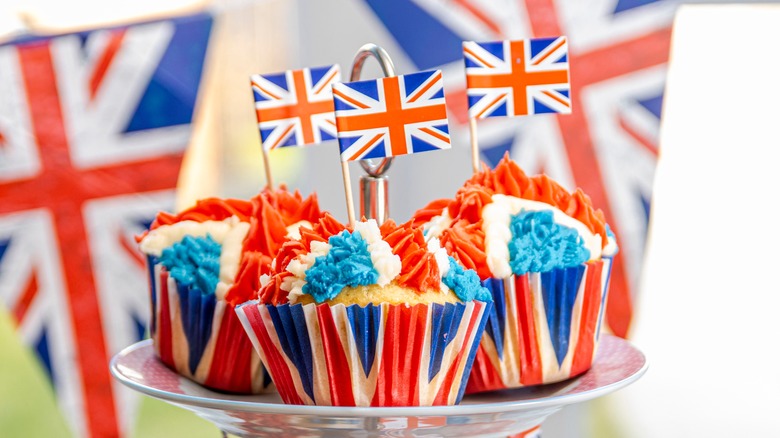GBBO's Judges Reflect On How American And British Foods Differ
"The Great British Bake Off" (GBBO) has carved out a spot in the hearts of fans in both the U.S. and the U.K. and it isn't particularly difficult to tell why. In case you haven't seen it, the show follows amateur bakers with different backgrounds, ages, and skill sets who compete throughout 10-hour-long episodes. Per U.K. news outlet Birmingham Mail, the 2017 GBBO season finale drew a whopping 8.9 million viewers. There's even a "Great British Bake Off" musical.
A big part of the show's appeal is how much kinder it is than most American cooking shows, says HuffPost. It stands in stark contrast to U.S.-based programs with harsh names like "Cutthroat Kitchen," "Chopped," and "Hell's Kitchen." At the forefront of these shows is a highly-competitive, rigorous energy with contestants putting each other's dishes down in order to scramble to the number-one spot. Instead, on GBBO, the bakers are nice to each other, even lending a helping hand during challenges. The show celebrates victories (even little ones) rather than emphasizing shortcomings. Even the GBBO intro title sequence is scored by a soft string arrangement and chime-like bells. "Pleasant" is a fitting summation of the show's entire vibe.
Aside from the tone of the cooking shows, another big difference between the British and American food worlds is (of course) the food itself. But, what exactly sets them apart? GBBO judges Prue Leith and Paul Hollywood break it down.
American food is sweeter and has regional influence
So, how do American and British foods differ? The popularity of coffee versus tea is perhaps the most glaringly obvious (and famous) difference, says Insider. Of course, there are colloquial differences, as well: In the U.K., French fries are called "chips," and American potato chips are called "crisps." Per CNN, other charming, kitschy British food names include "toad in the hole," "roly-poly," and "Jammy Dodgers."
Beans and fried tomatoes are common at the British breakfast table, savory pies are popular, and dinners are typically pretty meat-and-potatoes heavy. A caricature of the culinary divide might depict an American chowing down on a burger and a Brit eating bangers and mash or Yorkshire pudding. But, these differences only scratch the top of the surface.
Paul Hollywood tells Eater that one primary difference is that American desserts tend to be sweeter than British treats. On the English Tea Store, for instance, "Jacob's Mini Twiglets" is a savory snack flavored with Marmite, yet they're classified as a "cookie." Plus, Hollywood says, American dishes often showcase more geographic pride (i.e. pecan pie in the South) than British dishes do. Prue Leith agrees that U.S. foods are very high in sugar, but that isn't the key difference to her. Cinnamon and chile, says Leith, are big things for Americans — not so much in the U.K. In a similar vein, Leith explains that many American dishes feature some Mexican influence, which is rare for British food.

